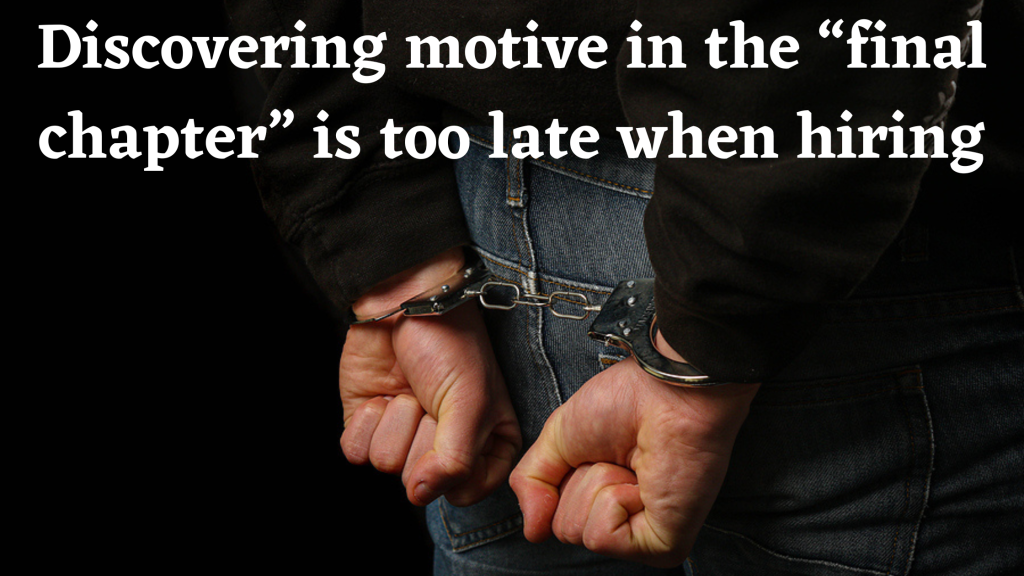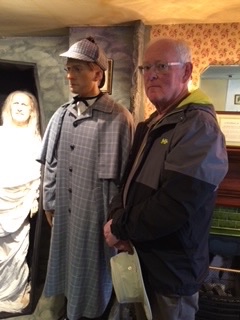Today, in recognition of International Sherlock Holmes Day, I am returning to a theme that I explore from time to time—the similarities between how detectives of fiction, film and television solve crimes (usually murders) and the process of finding the right person to hire.
First designated in 2013, Sherlock Holmes Day occurs on the anniversary of the birth of the detective’s creator, writer Sir Arthur Conan Doyle. It is a celebration of the creativity of Conan Doyle, who was born on May 22, 1859, and the acute observation and deductive skills of Holmes. Those skills are invaluable to those responsible for hiring the right person.
Holmes is believed to have been based on Dr. Joseph Bell, who Conan Doyle first encountered in 1877 when studying at Edinburgh University. “A Study in Scarlet,” the first Holmes short story, appeared in 1887.
Ever since Holmes was created, fiction’s detectives have looked for means, opportunity and motive before identifying the culprit in a book’s final chapter. Hiring managers also consider means (training and education), opportunities (experience) and motive (attitudes and values) when identifying who to hire.
In detective stories, the means (the cause of death) can be obvious—a bullet hole in a victim’s chest, a knife sticking out of a body, or a bloodied baseball bat lying nearby.
The question of whether applicants have the means to do the job is answered early in the hiring process by scanning resumes or application forms to discover which applicants have the training and education necessary. This exercise leads to a short list of candidates to be interviewed.
As murder mysteries build to the culprit’s reveal in the final chapter, the detective and readers (or viewers) discover that several suspects have had the opportunity to commit the crime. But the motive for wanting the victim dead is not as easily identified.
“Two of the classic murder trinity—means and opportunity—weren’t difficult to pin on her,” says Chief Inspector Peter Diamond in the novel Showstopper by Peter Lovesey. “The motive was the elusive one.”
Early in their investigation, detectives will ask friends and relatives if the victim had any enemies or if there was anyone who would want them dead.
“We must seek for a motive,” Hercule Poriot says in The Cornish Mystery by Agatha Christie. “Your husband, he would not poison you just pour passer le temps! Do you know of any reason why he should wish you out of the way?”
While these inquiries may be made early in the story, the motive is seldom revealed to readers or viewers until after the culprit is identified in the book’s final chapter or the movie’s final scenes.
That may be a useful convention of murder mysteries, but it’s not practical in the real world. Here, the “final chapter” usually occurs after someone has been hired and is on the job. That is too late to discover the attitudes and values that motivate how the new hire performs on the job.
Interviews and reference checks are your investigative tools. Through questioning, you gather evidence of how the candidate performed in circumstances similar to those that your staff encounter regularly (opportunity) and the values and attitudes that guide their behaviour.
Have they done the right things in the right way—as you would wish them to and as your top performers do—for the right reasons (motive)?
When the answer is yes, your observations (what you learned during the interview and reference checks) and deductive skills will have identified the right person to hire.
SIDEBAR:
Questions to Discover Motive
[Integrity] If you have played Monopoly, you may recall a Community Chest card that reads: “Bank error in your favour. Collect $200.” Describe a time when an error of any kind was made in your favour, whether it involved money, products or services.
[Teamwork] Describe a time when teamwork made a difference. Without teamwork, it’s unlikely the job would have been done.
[Anticipating Change] Some changes are unexpected, but there are others we see coming. Describe a workplace change that you anticipated and how you prepared for that change.
[Customer Service] Customers have different service expectations. Some want to quickly grab a coffee and be on their way, while others are seeking a break from their hectic lives. How have you changed how you serve customers based on what you sensed about their expectations?
[Teamwork] Give us an example of how you worked with one or more colleagues to accomplish a work-related goal.
[Innovation] Describe a new idea that you brought to your current job that was based on your training, something you read, or your previous work experience.
[Perseverance] Give me an example of how you persevered in a difficult situation and accomplished your goal in spite of it.
==
Writing questions to find evidence of motive is one of the topic included in my day-long Interview Right to Hire Right workshops. Contact me (nmscott@telus.net or 780-232-3828) to schedule a workshop for your leadership team or to learn more.


